William George Freemantle
Lieutenant William George Freemantle, 1st/7th Battalion, Manchester Regiment.
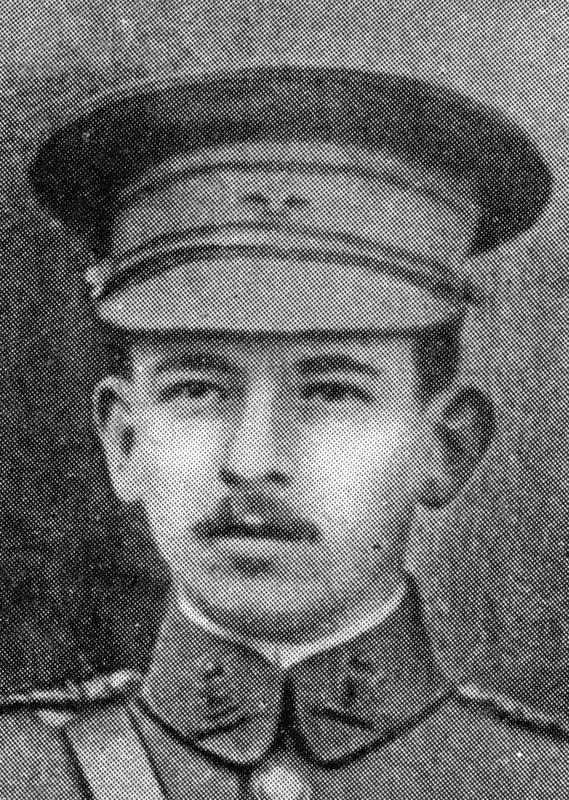
William Freemantle (Bond of Sacrifice - IWM). |
William was born in Newbury on 2 September 1889, the second child and only son of William Chamberlain Freemantle and his wife Louisa Kate née Abbotts. He had two sisters, Ethel Louisa, born in 1887 and Hilda Agnes born in 1890.
His father was the proprietor of a well-known local business in a prominent position on the town’s main shopping street – Fielder’s the grocer/chemist’s at 2&3 Northbrook Street. The family lived above the shop, which was demolished in the 1930s when the neighbouring business, Toomer’s the ironmongers, expanded and redeveloped the site. The premises now [2015] comprise Costa coffee at No 2 and Clark’s shoe shop at No 3.
Young William’s education and early working life were well detailed in the newspaper report of his death:
Newbury Weekly News, 17 June 1915 – Local War Notes
The sad intelligence was received on Saturday by Mr and Mrs W C Freemantle, of Northbrook-street, that their only son had been killed in action at the Dardanelles, on June 10th. The deceased officer, Lieutenant William George Freemantle, had a most successful course at school and college, since which he has entered upon a career in which there was every promise of distinction. He began his early education at Mr Lane’s School, the Ferns, Thatcham, and from there went to Sidcot, Somerset. He matriculated in both London and Manchester Universities, and entered Victoria College, Manchester, where he gained his degree as Bachelor of Science. On completing his collegiate course, he obtained an appointment as assistant analyst to the Manchester Corporation, which he had held for four years.
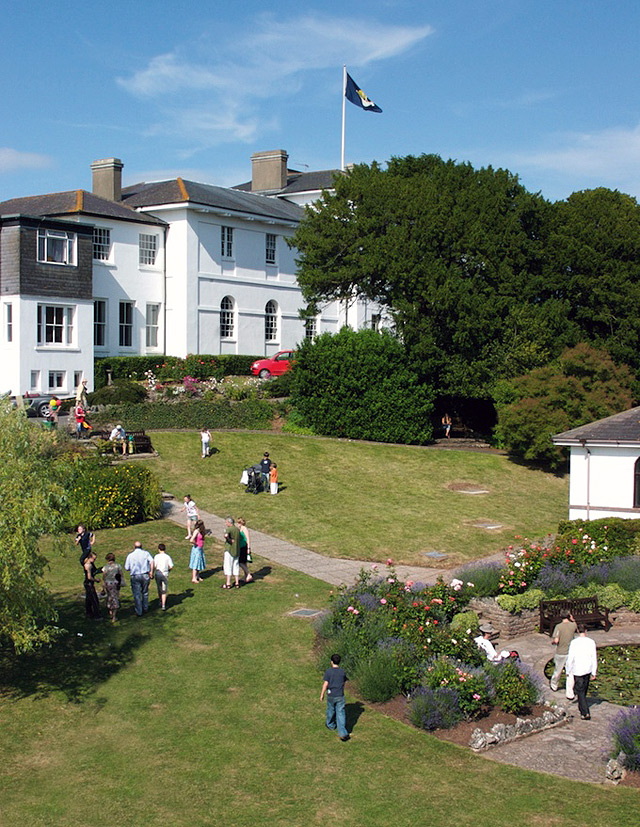
Sidcot School. |
William attended Sidcot School in Somerset from 1902 until 1907; the school is still going and is one of a small number of Quaker schools. Quaker schools are not renowned for producing military men as the Quaker ideals are more inclined to peaceful resolution of issues. However, pupils are not exclusively from Quaker families, many non-Quaker parents, including perhaps, William and Louisa Freemantle, like the school ethos and value the education provided.
At the school William was notable for his interest in photography and for taking the role of Laboratory Curator - both indicative of an interest in chemistry.
While he was at Sidcot there was a family tragedy when his elder sister, Ethel, who had also attended Sidcot School, died on 5 November 1904 aged only 17.
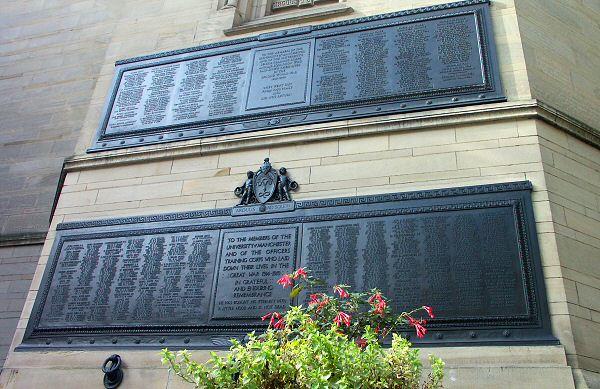
Manchester University Memorial. (c) Carl Rogerson |
Victoria College is better known as Manchester University, which took the name from a short-lived federal Victoria University in which the Owens College, Manchester operated alongside colleges from Liverpool and Leeds. In 1903 the federal university collapsed when the three colleges all became universities in their own right. William studied Chemistry and gained a BSc(Hons) degree in 1910.
Following the award of his degree William found work as an Assistant Analytical Chemist at the Davyhulme sewage works in Trafford, Greater Manchester. He lodged with George and Martha Kitson at 96 Flixton Road, Urmston – where he evidently joined the local Conservative club. At the sewage works he was an assistant to Dr Gilbert J Fowler, an internationally renowned expert in sewage and bacteriology - and another former pupil of Sidcot School. He even had a ship named after him when Manchester Corporation commissioned a new sludge vessel from Ferguson Shipyards on the Clyde; the MV Glibert J Fowler was laucnhed on 24 April 1968.
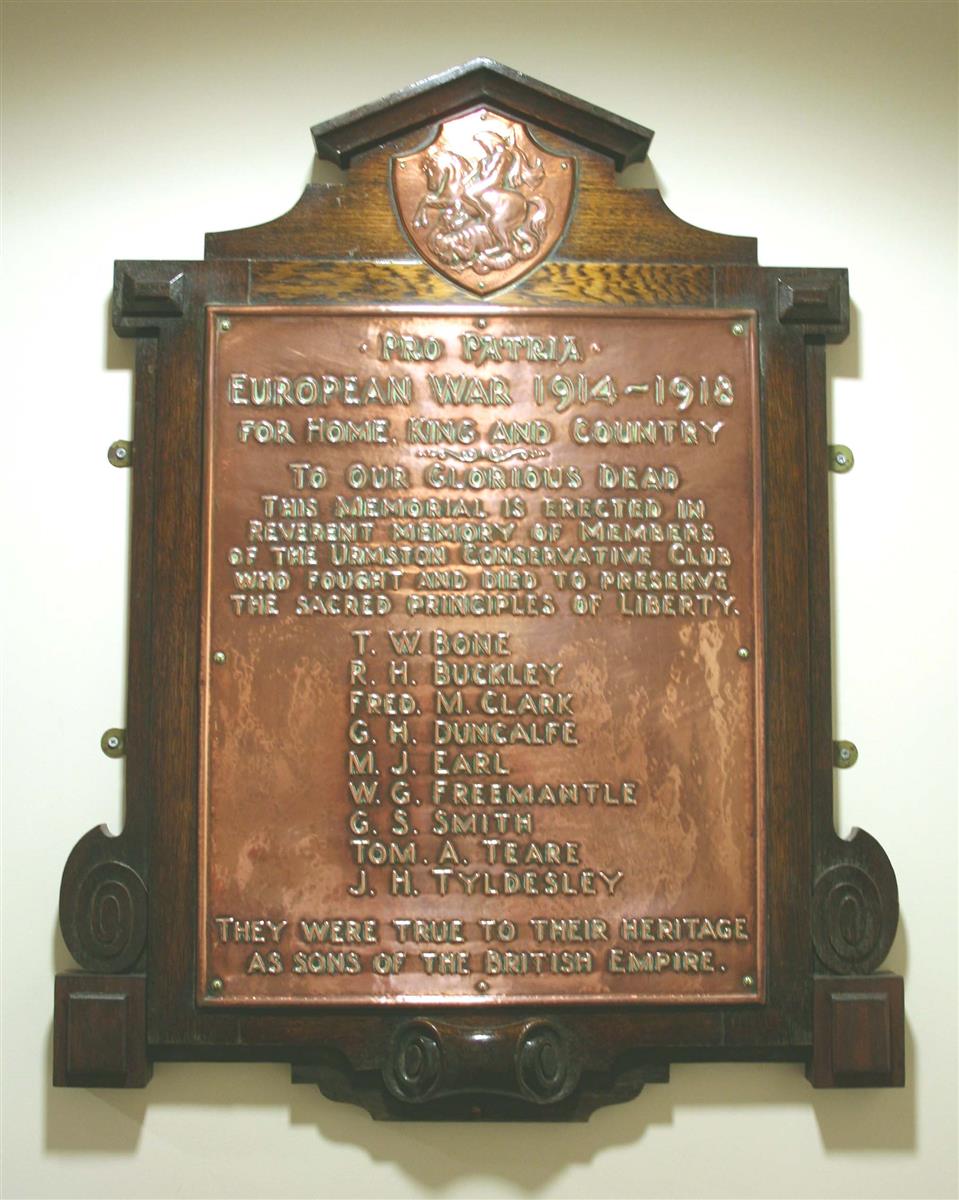
Urmston Conservative Club memorial. (c) George Cogswell |
At university he had joined the Officer’s Training Corps and joined the local Territorials when he left:
Newbury Weekly News, 17 June 1915 – Local War Notes (contd)
... During the time he was at Victoria College, he served in the Officer’s Training Corps, and rose to the rank of quartermaster-sergeant. On leaving the college, he joined the 7th Manchester Battalion, went through the Hythe School of Musketry in 1909, and the same year won Major Thorburn’s challenge cup for general efficiency, with a medal for personal possession. He was secretary of the MUOTC Club, and edited the Corps magazine. Lieut Freemantle had held his commission for four years, and was keenly interested in military duties. ...
The 7th Battalion of the Manchester Regiment was a Territorial battalion made up of part time soldiers committed to the defence of our shores. When war was declared the Territorials were called up and asked to sign the Imperial Service Obligation, signing was proof that the signatory had volunteered to serve abroad as and where the War Office deemed necessary. The majority signed and became the 1st Line territorials, their battalions being designated the 1st/7th etc; those that decided not to sign became the core of the 2nd Line (2nd/7th Manchester, etc) which took on the home defence role.
Newbury Weekly News, 17 June 1915 – Local War Notes (contd)
... He was spending a holiday in Newbury when war was declared, and on the August Bank Holiday received orders to rejoin his regiment the 7th Manchester. Within a month the battalion left for foreign service, going first to Egypt, from whence they were drafted to the Dardanelles. ...
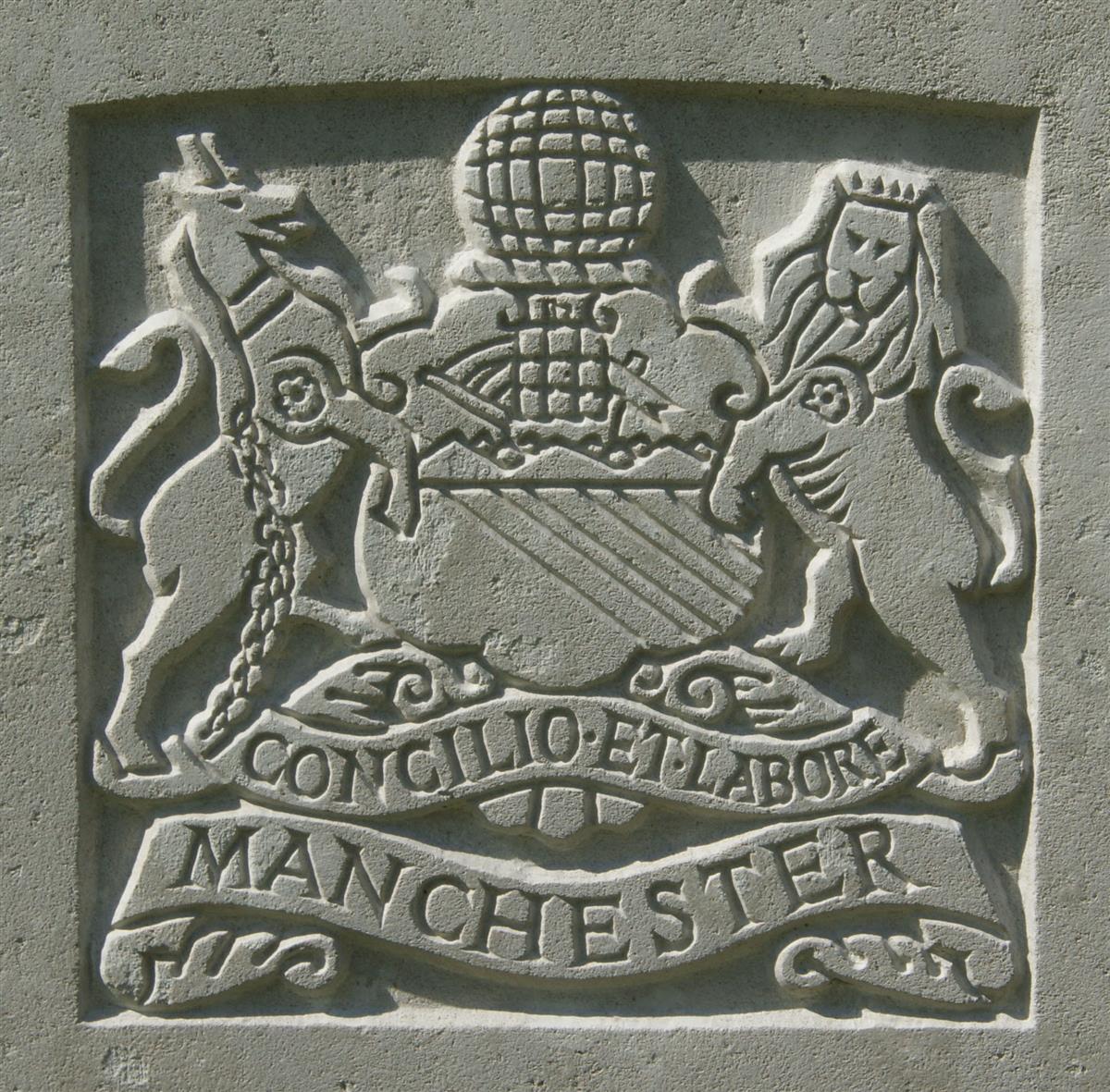
The regimental badge of the Manchester Regiment, as used on CWGC headstones. |
The Division was ordered to Egypt in September 1914, the first Territorial division to move overseas. Egypt was vital to British interests and the war effort because of the Suez Canal, which was threatened by the neighbouring Ottoman Turkish Empire. Although the Turks had not yet entered the war they were known to be sympathetic to the Germans. In the end Britain declared war on the Turks in November 1914 and formerly announced a British Protectorate over Egypt (which was still, notionally, a part of the Ottoman Empire. William landed in Egypt on 10 September 1914.
In February 1915 the Turks attacked the canal but were easily repulsed by the defenders, who comprised the East Lancashire Division and several divisions of the Indian Army as well as warships on the canal itself.
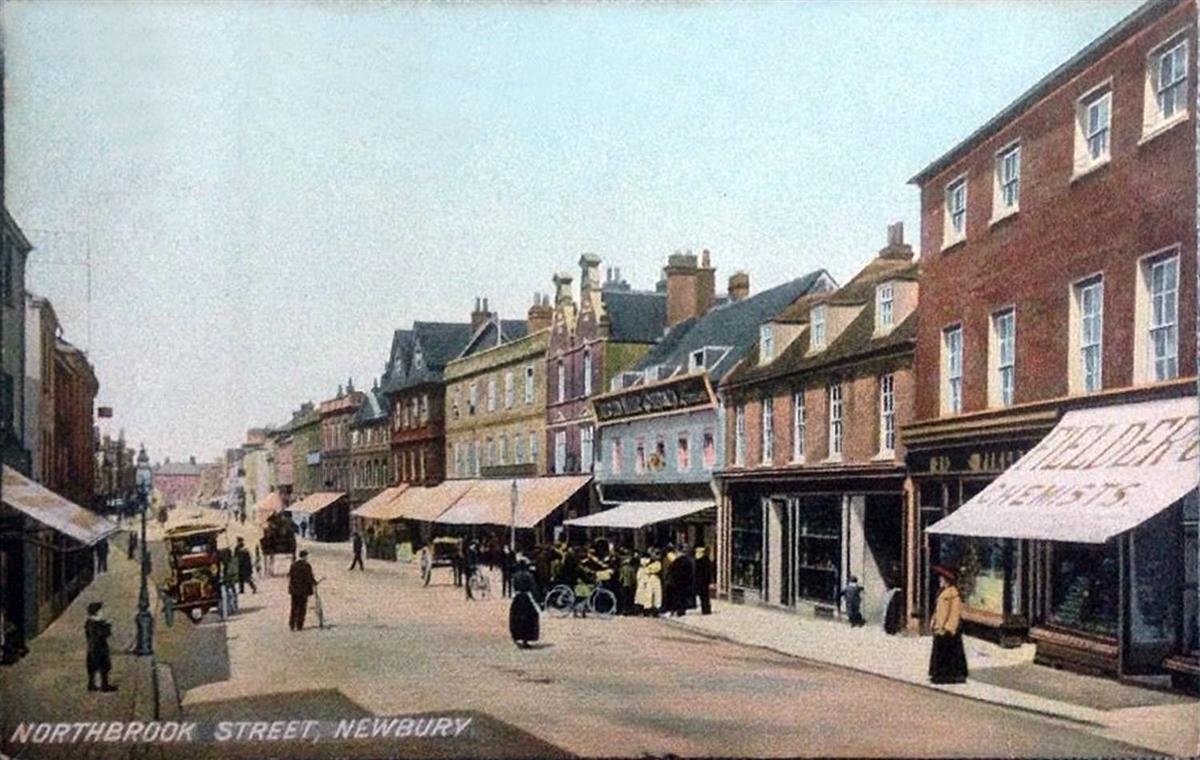
Northbrook Street, Newbury ca1910, the awning on the right is on the Freemantle's shop (Fielder's) and home. |
By this time Egypt was filling up with troops, Indians, Australians and New Zealanders bound for France, and British Territorials headed for India - all added to the considerable force defending the canal. So, when Churchill’s madcap scheme to knock Turkey out of the war by capturing Istanbul via a landing on the Dardanelles Peninsula was accepted by the British Government, the troops using Egypt as a staging post were a ready-made invasion force.
On 3 May 1915 the 1/7th and 1/8th Manchesters embarked on the SS Ionian at Alexandria, which sailed at 9.00pm bound for Cape Helles where they landed at some time between 4.00pm on 6 May and 12.30pm the following day.
They were soon in action and between 4 to 8 June were heavily engaged in an attempt to capture the village of Krithia. This village, close to the Allies landing site was a target for the first day of the campaign, but the Turks repulsed every attempt to capture it. On the night of 8/9 June the Brigade was relieved and withdrew into reserve positions.
There was some confusion over the date of William’s death; initial reports suggest that he died on 10 June:
Newbury Weekly News, 17 June 1915 – Killed in Action
FREEMANTLE – June 10, at the Dardanelles, Lieutenant William George Freemantle, 7th Manchester Regiment, only son of Mr and Mrs W C Freemantle, Northbrook-street, Newbury, in his 26th year.
Newbury Weekly News, 17 June 1915 – Local War Notes (contd)
... It was heard that Lieutenant Freemantle met his death on June 10th. His parents had heard through a Manchester paper that he had been wounded, but the official intimation from the War Office states that he was “killed in action.” The townspeople of Newbury sincerely sympathise with Mr and Mrs Freemantle in their severe bereavement.
Mr and Mrs Freemantle on Tuesday received a telegram from Buckingham Palace, as follows:-
“The King and Queen deeply regret the loss you and the Army have sustained in the death of your son in the service of his country. Their Majesties truly sympathise with you in your sorrow. Keeper of the Privy Purse.”
Lieutenant Freemantle had had the honour of being presented to his Majesty the King at a Levee at Buckingham Palace about two years ago.
It is not clear from the newspaper how William met his end – though a Brigade diary entry for 22 May might hold a clue:
War Diary of the 127th (Manchester) Brigade – 22 May 1915
Brigade rested in General Reserve Bivouac which was subject to Artillery fire.
If he died on 10 June it is possible that he was a victim of shellfire on these reserve positions.
However, a different story comes from a letter written by a fellow officer who describes William’s death taking place on 4 June:
Still Small Voice – Sidcot in the Great War, Christine Gladwin, p34
I happened to be quite close to him after we had taken the enemy’s first line trench on 4th June; he was about the last officer left of his Company, and was carrying on quite coolly under a terrific fire, and continued to do so a long time after he had been wounded in both arms, and would not allow anyone to touch him. When he met his death it was instantaneous.
This information is consistent with the official date of death recorded by the Commonwealth War Graves Commission as 4 June 1915.
His body was never identified so his name is remembered on the Helles Memorial to the missing of this futile campaign.
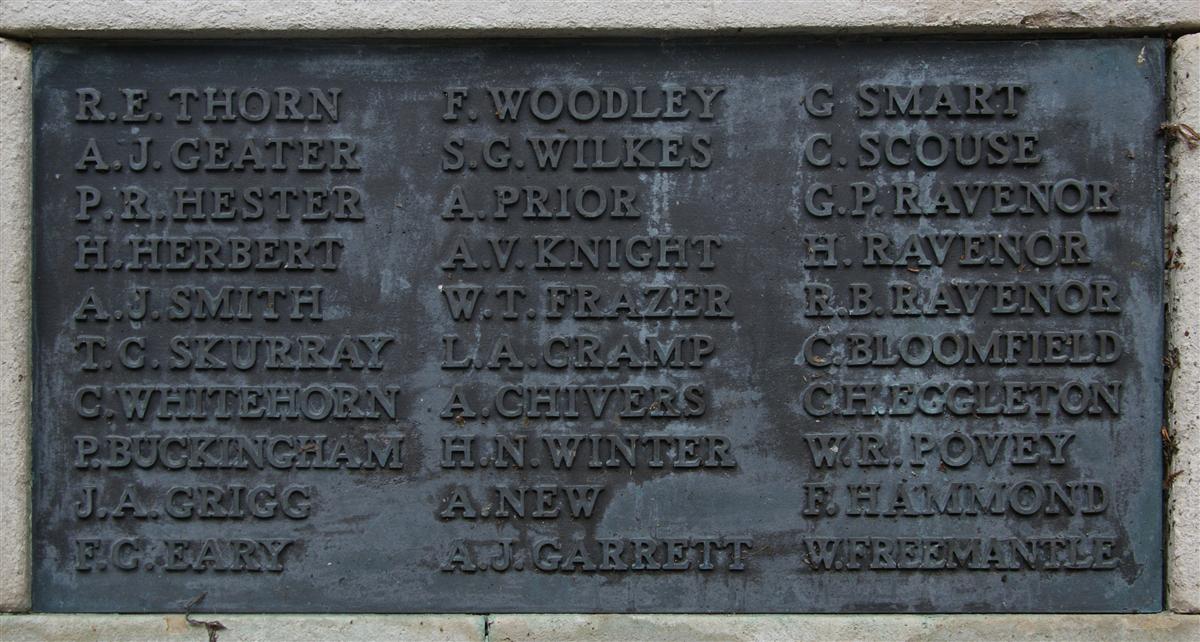
William's name on Newbury War Memorial. (bottom right) |
Locally William is remembered on tablet 12 of the Newbury Town War Memorial, the memorial board and roll of honour in St Nicolas’ Church, Newbury.
An inscription remembering William was also added to his sister Ethel's grave in Newtown Road Cemetery. His father was also buried in the same plot following his death on 1 February 1925, aged 74. There was no room in the grave for William's younger sister, Hilda, when she died on 21 February 1926, aged 35. She was buried in another plot in the same cemetery and was joined by her mother, Lousia, when she passed away aged 76 on 6 October 1933. By coincidence, or perhaps design, Hilda and Louisa lie in the plot adjacent to that of the Toomer family, formerly their neighbours in Northbrook Street.
William is also remembered on the war memorial at Manchester University and on a memorial tablet in Urmston Conservative Club.
Special thanks to those who have helped with this story:
George Cogswell and Carl Rogerson for photographs.
George Cogswell and Sidcot School for research and background.
Newbury Weekly News for access to their archives.
